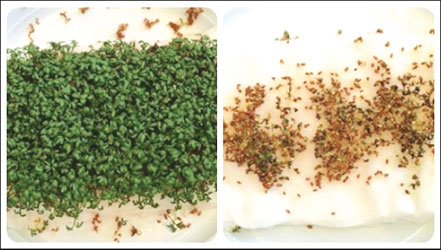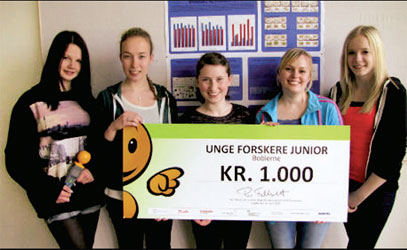Student science experiment finds plants won't grow near Wi-Fi router
Ninth-graders design science experiment to test the effect of
cellphone radiation on plants. The results may surprise you. Five
ninth-grade young women from Denmark recently created a science
experiment that is causing a stir in the scientific community.
It started with an observation and a question. The girls noticed that
if they slept with their mobile phones near their heads at night, they
often had difficulty concentrating at school the next day.
|

Cress seeds |
 |
They wanted to test the effect of a cellphone's radiation on humans,
but their school, Hjallerup School in Denmark, did not have the
equipment to handle such an experiment. So the girls designed an
experiment that would test the effect of cellphone radiation on a plant
instead.
The students placed six trays filled with Lepidium sativum, a type of
garden cress, into a room without radiation, and six trays of the seeds
into another room next to two routers that according to the girls’
calculations, emitted about the same type of radiation as an ordinary
cellphone.
Over the next 12 days, the girls observed, measured, weighed and
photographed their results. By the end of the experiment the results
were blatantly obvious the cress seeds placed near the router had not
grown.
Many of them were completely dead. Meanwhile, the cress seeds planted
in the other room, away from the routers, thrived.
The experiment earned the girls (pictured above) top honours in a
regional science competition and the interest of scientists around the
world.
According to Kim Horsevad, a teacher at Hjallerup Skole in Denmark
where the cress experiment took place, a neuroscience professor at the
Karolinska Institute in Sweden, is interested in repeating the
experiment in a controlled professional scientific environment. |


